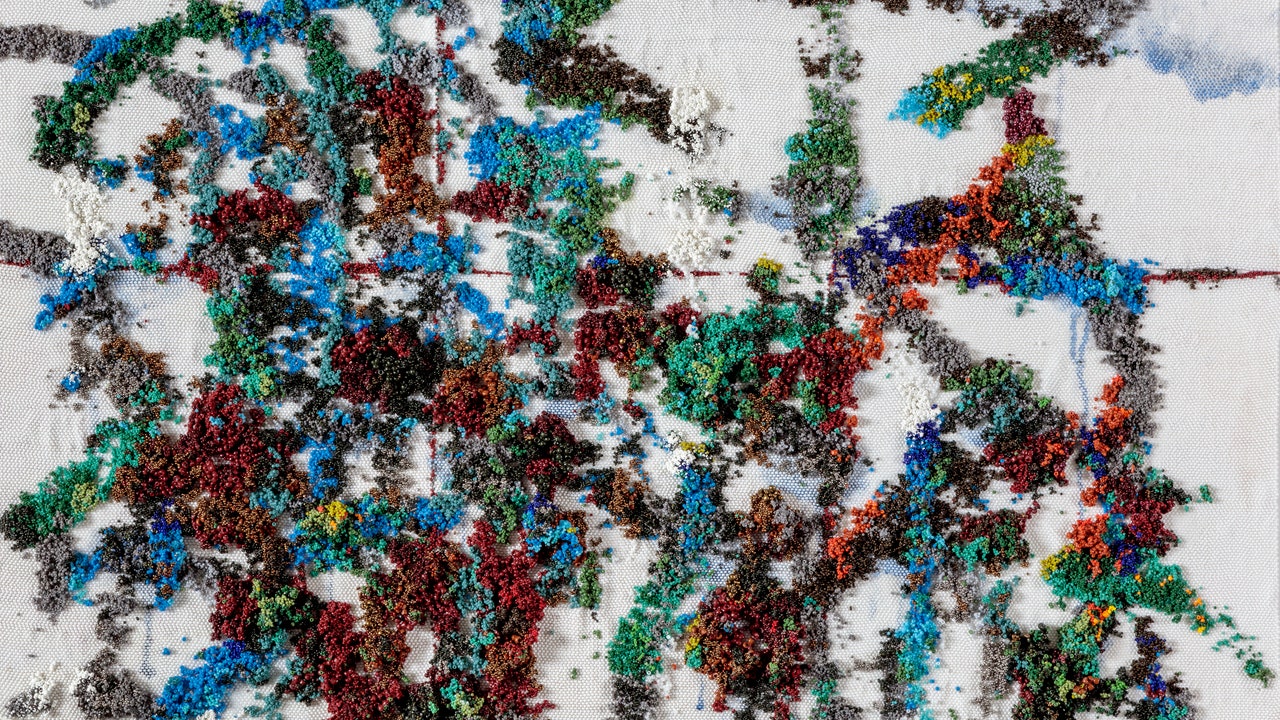How long did that take?
It’s an obvious first question when looking at the work of artist Liza Lou. She has used the same material—glass beads—for more than three decades, painstakingly applying millions of tiny dazzlers one by one to create her painterly installations.
“I have a weird relationship to time,” Lou admits. “Everything that I make, you have to accept that it’s going to take a while. It’s part of the material. It’s baked into the practice.” It’s not so much that she is patient by nature, she tells me from her studio in Joshua Tree, but rather slow and methodical.
This month, New Yorkers have two new opportunities to marvel at the results of Lou’s careful toiling. On September 5, Lehmann Maupin gallery opens “Liza Lou: Painting,” an exhibition of new abstract works that crank up the bravado of Abstract Expressionism by using her signature beads as paint. These works are some of the most potent examples yet of Lou’s ongoing interest in the intersection of fine art and craft.
The next week, on September 13, the Brooklyn Museum unveils Lou’s installation Trailer (1998–2000), which will remain on long-term view in the museum’s lobby. Trailer is the masculine counterpoint to Lou’s best-known work, Kitchen (1991–96), her paean to the hidden labor of women in the Whitney’s collection. The inside of Trailer is similarly covered in tens of millions of glass beads, but where Kitchen is a colorful confection of domesticity, Trailer is a grayscale film noir. Hanging amid the rifle, whiskey bottle, and typewriter is an air of something gone horribly wrong.
In all her art, “the through lines have been playing with heroics,” Lou says. But these two September events—one a new body work, the other a resurrected old one that has not been on public view in over a decade—have a fundamental connection. Lou is peeling back the layers of a certain kind of maleness: the lone wolf, the madman, the genius left to his own devices.
The new painting works have been in her brain for a long time. Though she has applied her beads in a painterly way before—as in her clouds series from 2018—Lou says this is a breakthrough. “It’s the culmination of 35 years of working with this material.”
